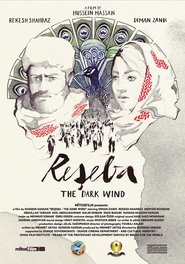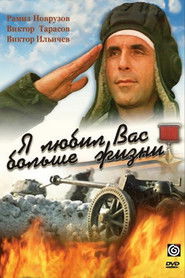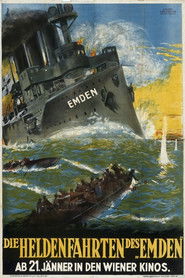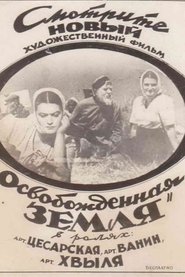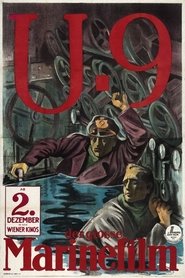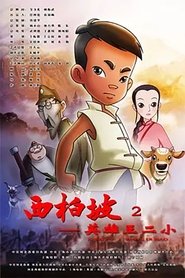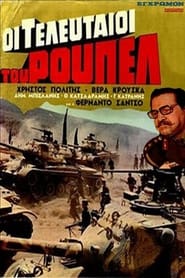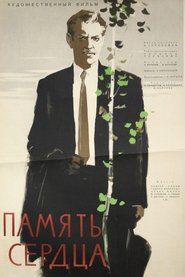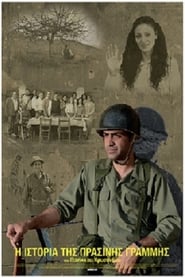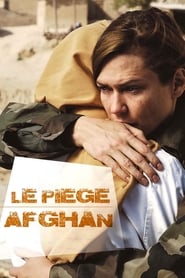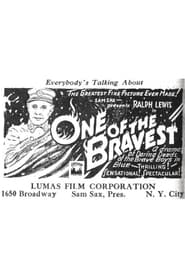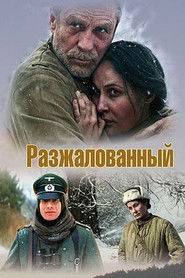Top Rated War Movies on Pantaflix - Page 339
-
Karl Jenkins - The Armed Man: A Mass For Peace
2005
star 9The Armed Man was commissioned by the Royal Armouries in the UK to mark the millennium year 2000. The CD achieved 'gold' sales and spent over 185 weeks in the UK classical charts. This DVD presents a live concert performance of Jenkins’ dramatic work against a backdrop of provocative video images. In 2000 a limited edition CD/DVD pack was released to commemorate the 2000th performance of the work. The Armed Man - The Call To Prayers (Adhaan) - Kyrie - Save Me From Bloody Men - Sanctus - Hymn Before Action - Charge! - Angry Flames - Torches - Agnus Dei - Now The Guns Have Stopped - Benedictus - Better Is Peace -
Reseba: The Dark Wind
2016
star 8Radical Islamist militants attack a village in Iraq where a young Yazidi love couple prepares for marriage. From that moment onwards their lives are turned into a nightmare. -
Ordinary Heroes
1986
Ordinary Heroes
1986
star 6This is about a man falling in love with a girl and then immediately gets drafted into the Army during the Vietnam War. In the war he becomes blind and gets discharged. -
I Loved You More than Life
1985
star 8Biopic about general Hazi Aslanov, who died fighting Germans in WW2. -
Hidden Soldier
2010
Hidden Soldier
2010
star 1Normandy, 1944. Private Wilson is on a mission in enemy territory. Hunted down and out of ammunition, Wilson suffers strange interferences, catapulting him into the violence and madness of war with an unexpected ending. -
Il prato delle volpi
1990
-
The Raider Emden
1926
-
Our Father
2015
Our Father
2015
star 6The Second World War is experienced through the journey of Private Cole, a dramatic study of the contrasting nature between the innocence of childhood and the reality of war, and the emotional struggle that accompanies it. -
Liberated Earth
1946
Liberated Earth
1946
star 7After the liberation of the Kuban by the Soviet Army troops, farmers return home and begin to restore the destroyed economy. Under the leadership of the young chairman, Nadiezdha Pritulyak, growers are working with great enthusiasm. -
U 9 Weddigen
1927
-
Xi Bai Po: Wang Er Xiao
2013
star 2A 13-year-old boy whose parents are killed in the Second Sino-Japanese War finds vengeance as a key player in the village resistance. -
Baroud
1932
Baroud
1932
star 5English-language version of Baroud, sometimes referred to as Love in Morocco. 'A sergeant in the Foreign Legion falls in love with Zinah, the daughter of a Berber chief.' (British Film Institute) -
Los heroes del patibulo
1971
star 7Spring 1941. A group of soldiers under the command of Lieutenant Alexis Komninou, protects the border at Fort Rupel and prepares to accept the German attack. The officer together with the soldier Kosmas Georgiou undertake a spying mission of the German forces in Bulgaria. -
Resistopia: The Movie
2016
star 62024: The war against the aliens is lost. The superior "Xenos" have taken over the rule within only four weeks and they killed more than 90% of the world's population. This genocide is called "Great Purge". -
The Return of the Violin
1973
star 6During the WWII a group of children are trying to save Stradivarius violin from Nazis. -
The Memory of the Heart
1958
star 6The story of an English pilot who crashed in the Soviet Union during the Second World War, and whose life is saved by a woman and a boy - two partisans near the enemy lines, Long afterwards in England he remembers the Russians with affection, tells his friends about his experiences, and resolves to go back to find the two partisans his heart remembers. -
The Story of the Green Line
2017
star 6A story set in the Green Line in Nicosia, Cyprus, where a wall divides a country. Two soldiers, a Greek Cypriot and a Turkish Cypriot, decide to embark on a secret journey that is dangerous no matter which side you are at. -
Le piège afghan
2011
Le piège afghan
2011
star 6A doctor on a French military base in Afghanistan, Nadia, in her thirties, works for the coalition of major Western powers. When she is sent on a mission to a village in a strategic location, her convoy falls into an ambush. Nadia and a soldier of Tajik origin are captured by a group of Taliban led by Abdullah, a Pakistani. The soldier is beheaded, while Nadia is miraculously released thanks to the intervention of a Pashtun leader, Hassan Walli, whom she had met ten years earlier in Paris. Using this friendship, Colonel Leroy of the DGSE asks the young woman to get closer to Hassan, who is seen as a moderate opposed to Al-Qaeda… -
One of the Bravest
1914
One of the Bravest
1914
star 5A romantic drama about love and jealousy. Two firefighters want the same girl. She almost gets married to Harry, but John sneakily keeps her from doing so, and then marries her himself. After a year, he has started drinking and has lost his job, and his wife has to go to work at the factory. When a fire breaks out there, he rescues her, but loses his own life in the process. -
Degraded Officer
2009
Degraded Officer
2009
star 6During 1943 a young platoon commander refuses to follow an order of frontal attack; he doesn't want to send his soldiers against the enemy machine-guns and get them killed. A battalion commander rips off his shoulder straps and sends him to the military tribunal. But the war is everywhere and the demoted officer and his escorts have to start an unequal fight with the enemy.
 Netflix
Netflix
 Amazon Prime Video
Amazon Prime Video
 Apple iTunes
Apple iTunes
 Apple TV Plus
Apple TV Plus
 Disney Plus
Disney Plus
 Google Play Movies
Google Play Movies
 Paramount Plus
Paramount Plus
 Hulu
Hulu
 HBO Max
HBO Max
 YouTube
YouTube
 fuboTV
fuboTV
 Peacock
Peacock
 Peacock Premium
Peacock Premium
 Amazon Video
Amazon Video
 The Roku Channel
The Roku Channel
 AMC+
AMC+
 Kocowa
Kocowa
 Hoopla
Hoopla
 The CW
The CW
 Vudu
Vudu
 Starz
Starz
 Showtime
Showtime
 PBS
PBS
 Pantaflix
Pantaflix
 FXNow
FXNow
 Tubi TV
Tubi TV
 Kanopy
Kanopy
 Comedy Central
Comedy Central
 Crunchyroll
Crunchyroll
 Microsoft Store
Microsoft Store
 Redbox
Redbox
 Sun Nxt
Sun Nxt
 ABC
ABC
 DIRECTV
DIRECTV
 Crackle
Crackle
 Fandor
Fandor
 Plex
Plex

